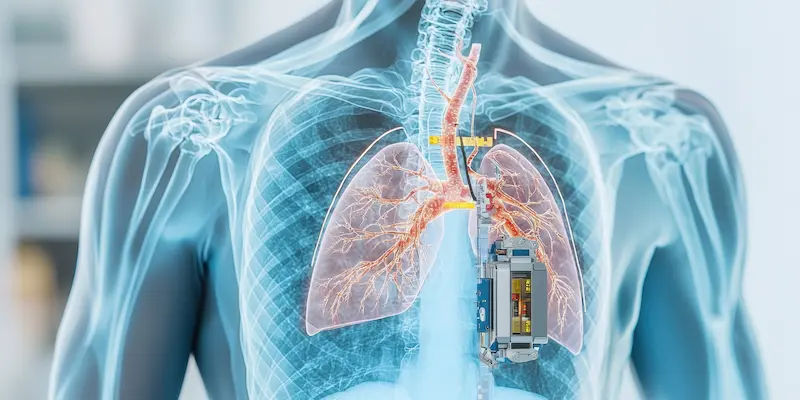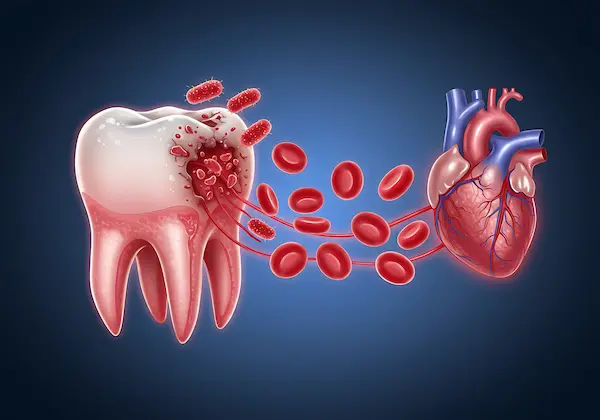Scarless Heart Surgery: A Revolutionary Approach to Cardiac Care
Discover the benefits of scarless heart surgery, a groundbreaking approach to cardiac care that offers minimal invasiveness, faster recovery, and improved patient outcomes.

Written by
Last updated on 3rd Jul, 2025
Minimally invasive heart surgery represents a significant leap forward in cardiac care. Unlike traditional open-heart surgery, which involves cutting through the breastbone (sternum), minimally invasive techniques use smaller incisions, leading to less pain, shorter hospital stays, and quicker recoveries. Scarless heart surgery, a subset of minimally invasive surgery, takes this a step further by aiming to eliminate visible scars altogether. In this blog, we will learn about scarless heart surgery.
What is Scarless Heart Surgery?
Scarless heart surgery refers to advanced surgical techniques that allow surgeons to perform heart procedures without leaving visible scars. This is achieved through small incisions in less noticeable areas, such as under the breast or between the ribs, or through natural orifices like the mouth or nose. The significance of scarless surgery lies in its ability to reduce physical and emotional trauma, offering patients a more comfortable and aesthetically pleasing recovery.
Difference Between Traditional Heart Surgery and Scarless Heart Surgery
Traditional heart surgery typically involves a large incision down the center of the chest, cutting through the sternum to access the heart. This approach, while effective, often results in significant pain, a lengthy recovery period, and a prominent scar. In contrast, scarless heart surgery uses smaller incisions or natural body openings, minimising tissue damage and reducing the risk of complications.
Types of Scarless Heart Surgery
There are three main types of scarless heart surgery and they are as follows:
1. Robotic Heart Surgery
Robotic heart surgery is a cutting-edge technique where surgeons use robotic arms controlled by a computer console to perform precise movements through tiny incisions. This method offers enhanced dexterity and visualization, allowing for complex procedures with minimal scarring. For example, robotic-assisted mitral valve repair is a common application of this technology.
2. Percutaneous Interventions
Percutaneous interventions involve accessing the heart through blood vessels, typically in the groin or wrist, using catheters and imaging guidance. Procedures like transcatheter aortic valve replacement (TAVR) and balloon angioplasty fall under this category. These techniques are truly scarless, as they leave no external incisions.
3. Endoscopic Heart Surgery
Endoscopic heart surgery uses a thin, flexible tube with a camera (endoscope) inserted through small incisions to visualize and operate on the heart. This technique is often used for atrial septal defect (ASD) closures and other congenital heart defect repairs. The small incisions are strategically placed to minimize visible scarring.
Benefits of Scarless Heart Surgery
The benefits of scarless heart surgery are as follows:
1. Reduced Recovery Time
One of the most significant advantages of scarless heart surgery is the reduced recovery time. Patients often experience less pain and can return to normal activities much sooner compared to traditional surgery. For instance, some percutaneous interventions allow patients to go home the same day.
2. Lower Risk of Complications
Smaller incisions mean less tissue damage, which translates to a lower risk of infections, bleeding, and other complications. Additionally, the precision of robotic and endoscopic techniques reduces the likelihood of surgical errors.
3. Improved Cosmetic Outcomes
The absence of large, visible scars is a major benefit for many patients, particularly those concerned about the aesthetic impact of surgery. This can lead to improved self-esteem and psychological well-being post-surgery.
Risks and Limitations
While various treatments and lifestyle changes can help manage osteoporosis, it is essential to understand their potential risks and limitations to make informed healthcare decisions.
1. Potential Complications
While scarless heart surgery is generally safe, it is not without risks. Potential complications include:
- Bleeding: May occur during or after the procedure.
- Infection: Risk of infection at the surgical site or internally.
- Damage to surrounding tissues: Possible harm to nearby organs or blood vessels.
- Incomplete repair: May require additional procedures or corrective surgery.
2. Criteria for Patient Suitability
Not all patients are candidates for scarless heart surgery. Factors such as the type and severity of the heart condition, overall health, and anatomical considerations play a role in determining suitability. For example, patients with severe heart disease or those requiring complex repairs may still need traditional surgery.
Preoperative Assessment
A thorough preoperative assessment is essential to evaluate a patient's overall health, identify potential risks, and ensure a safe and successful surgical outcome.
1. Evaluation for Surgery Candidacy
A thorough preoperative assessment is crucial to determine if a patient is a good candidate for scarless heart surgery. This includes:
- Comprehensive preoperative assessment to determine suitability for scarless heart surgery.Includes medical history review, physical examination, and diagnostic tests.
- Common tests: echocardiograms, CT scans, and blood tests.
2. Pre-surgery Preparations
Patients may need to undergo specific preparations before surgery, such as:
- Patients may need to stop certain medications as advised by the doctor.
- Fasting may be required before the procedure.
- Pre-surgical tests and evaluations ensure readiness for surgery.
- Following the surgeon’s instructions closely is crucial for optimal outcomes.
The Scarless Surgery Procedure
The scarless surgery procedure offers a minimally invasive approach to medical treatments, allowing for faster recovery, reduced pain, and no visible scars.
1. Overview of Surgical Steps
The specific steps of a scarless heart surgery depend on the type of procedure being performed. Generally, it involves making small incisions or accessing the heart through natural orifices, using specialised instruments and imaging techniques to guide the surgery. The surgeon then repairs the heart defect or performs the necessary intervention.
2. Role of Technology in Surgery
Advanced technology plays a crucial role in scarless heart surgery. Robotic systems, high-definition imaging, and specialised catheters enable surgeons to perform complex procedures with precision and minimal invasiveness. For example, 3D imaging allows for real-time visualisation of the heart’s structures during surgery.
Postoperative Care and Recovery
Proper postoperative care and recovery are essential for healing, reducing complications, and ensuring a smooth return to daily activities after surgery.
1. Immediate Postoperative Protocols
Ensuring proper care immediately after scarless heart surgery is crucial for a smooth recovery and minimising complications. Some of the immediate protocols include:
- Patients are monitored in a recovery room before being transferred or discharged.
- Pain management is carefully managed to ensure comfort.
- Wound care is essential to prevent infection and promote healing.
2. Long-term Recovery Tips
Maintaining a heart-healthy lifestyle is key to long-term recovery and preventing future complications.
- Follow a balanced diet rich in heart-friendly nutrients.
- Engage in regular, doctor-approved physical activity.
- Adhere to prescribed medications for optimal heart health.
- Attend regular follow-up appointments with the cardiologist to monitor progress and address concerns.
Future Directions and Innovations
Ongoing advancements in medical research and technology continue to shape the future of healthcare, bringing innovative solutions for improved treatment and patient outcomes.
1. Technological Advancements
The future of scarless heart surgery looks promising, with ongoing advancements in robotics, imaging, and catheter-based technologies. These innovations are expected to further enhance the precision and safety of minimally invasive procedures.
2. Emerging Procedures in Cardiac Surgery
Emerging procedures, such as minimally invasive coronary artery bypass grafting (CABG) and hybrid surgeries that combine percutaneous and surgical techniques, are expanding the possibilities for scarless heart surgery. These procedures aim to offer the benefits of traditional surgery with the reduced invasiveness of modern techniques.
Conclusion
Scarless heart surgery offers numerous advantages, including reduced recovery time, lower risk of complications, and improved cosmetic outcomes. These benefits make it an attractive option for many patients seeking cardiac care. As technology continues to evolve, the field of scarless heart surgery is expected to grow, offering even more options for patients with heart conditions. The ongoing development of new techniques and technologies holds the promise of further improving patient outcomes and quality of life. In conclusion, scarless heart surgery represents a significant advancement in cardiac care, providing patients with a less invasive, more comfortable alternative to traditional heart surgery. With continued innovation and research, the future of heart surgery looks brighter than ever.
Consult Top Cardiologist
Consult Top Cardiologist

Dr. Anand Ravi
General Physician
2 Years • MBBS
Bengaluru
PRESTIGE SHANTHINIKETAN - SOCIETY CLINIC, Bengaluru

Dr. Tripti Deb
Cardiologist
40 Years • MBBS, MD, DM, FACC, FESC
Hyderabad
Apollo Hospitals Jubilee Hills, Hyderabad
Dr Moytree Baruah
Cardiologist
10 Years • MBBS, PGDCC
Guwahati
Apollo Clinic Guwahati, Assam, Guwahati

Dr. Zulkarnain
General Physician
2 Years • MBBS, PGDM, FFM
Bengaluru
PRESTIGE SHANTHINIKETAN - SOCIETY CLINIC, Bengaluru

Dr Nazneen Khan
Cardiologist
7 Years • M.B.B.S, M.D (MEDICINE), DrNB CARDIOLOGY
Pune
Apollo Clinic, Viman Nagar, Pune


